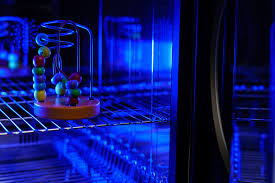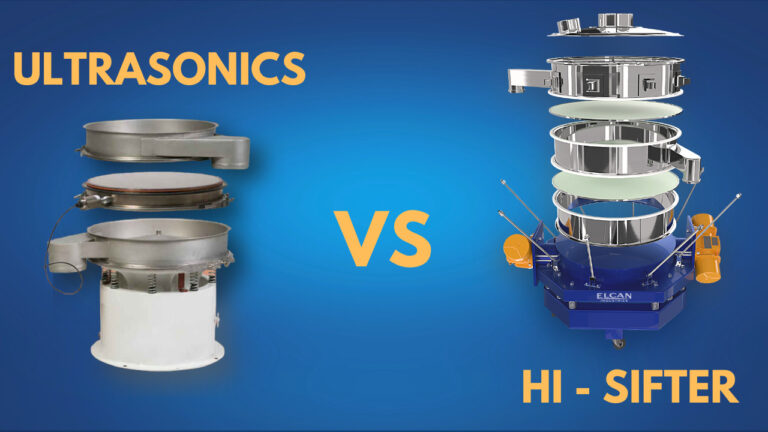The Power of UV Curing: Harnessing Light for Fast and Efficient Processes
Key Takeaways:
- UV curing utilizes ultraviolet (UV) light to quickly cure or dry materials through chemical reactions triggered by UV energy.
- UV curing offers faster curing times, environmental friendliness, and superior properties compared to traditional curing methods.
- UV curing is widely used in printing and packaging, electronics manufacturing, automotive and aerospace industries.
- Advancements in UV curing techniques include the use of LED UV curing systems and customized curing processes for optimized efficiency and productivity.
- The future of UV curing includes exploring new materials, expanding applications in the medical field, and addressing environmental sustainability concerns.
The Science Behind UV Curing
UV curing is a fascinating process that utilizes ultraviolet (UV) light to quickly and efficiently cure or dry various materials. To understand how UV curing works, it is essential to grasp the concept of UV light and its interaction with different substances.
Understanding UV Light
UV light is a form of electromagnetic radiation with a wavelength shorter than visible light. It is divided into three categories based on wavelength: UV-A, UV-B, and UV-C. UV-C, with the shortest wavelength, falls between 200 and 280 nanometers (nm).
UV-C light is highly energetic and carries enough energy to break molecular bonds. It is this property that makes it suitable for curing processes as it triggers chemical reactions that result in rapid adhesion and hardening of various materials.
How UV Curing Works
The UV curing process involves three essential components: a UV light source, a photoinitiator, and a substance that undergoes curing, known as a photopolymeric material. When a photopolymeric material is exposed to UV light, the photoinitiator absorbs the UV energy and initiates a chemical reaction, causing the material to harden or cure.
The photoinitiator acts as a catalyst, accelerating the curing process by absorbing UV energy and transferring it to the photopolymeric material. This reaction forms crosslinks within the material, creating a strong and durable final product.
The Benefits of UV Curing
UV curing offers numerous advantages over traditional curing methods, making it a popular choice in various industries. One significant benefit is the speed at which UV curing can be accomplished. Traditional curing methods often require hours or even days to fully dry or cure, while UV curing can achieve the same results in a matter of seconds or minutes.
Additionally, UV curing is a more environmentally friendly process compared to other curing techniques. Traditional curing methods frequently involve the use of solvents or chemicals that can be harmful to the environment and human health. UV curing eliminates the need for such substances, reducing emissions and wastage.
UV-cured products also exhibit superior properties, including increased scratch and chemical resistance, as well as improved color retention. This makes UV-cured materials highly desirable in applications where durability and aesthetics are crucial factors.
Applications of UV Curing Technology
The versatility of UV curing has led to its adoption in various industries. Let’s explore some prominent applications of UV curing technology.
UV Curing in Printing and Packaging
UV curing revolutionized the printing and packaging industry by offering faster drying times and enhanced print quality. UV-cured inks and coatings dry instantly when exposed to UV light, allowing for immediate handling and finishing. This significantly improves production efficiency and reduces the risk of smudging or damaging printed materials.
Additionally, UV-cured inks and coatings provide vibrant colors, sharp images, and excellent adhesion to various substrates, including paper, plastics, and metals. This makes UV curing ideal for applications such as labels, decals, flexible packaging, and even 3D printing.
UV Curing in Electronics Manufacturing
Electronics manufacturing heavily relies on UV curing for the production of printed circuit boards (PCBs) and electronic components. UV-curable adhesives and encapsulants are used to bond and protect PCBs, ensuring reliable performance and extended operational lifetimes.
The ability of UV curing to rapidly cure adhesives and coatings enables streamlined production processes, resulting in higher throughput and reduced manufacturing costs. UV-cured materials also offer excellent electrical insulation and temperature resistance, making them ideal for demanding electronic applications.
UV Curing in Automotive and Aerospace Industries
The automotive and aerospace industries benefit greatly from the use of UV curing technology. UV-cured coatings are employed for automotive refinishing, providing a durable and high-gloss finish while reducing the overall painting time.
In aerospace applications, UV-cured materials are utilized for bonding composite structures, sealing joints, and protecting sensitive electronic components. The rapid curing time of UV-curable adhesives and coatings ensures efficient assembly processes and reduces production lead times.
The Advancements in UV Curing Techniques
Over the years, advancements in UV curing techniques have enhanced efficiency, versatility, and overall performance. Let’s explore some of these developments.
LED vs. Traditional UV Curing
One significant advancement in UV curing technology is the emergence of light-emitting diode (LED) UV curing systems, replacing traditional mercury arc lamps. LED UV curing offers various advantages, including lower energy consumption, longer operational lifetimes, and the absence of hazardous mercury.
LED UV curing systems also provide precise control over the curing process, allowing for tailored curing profiles and increased flexibility. These systems emit narrower wavelength bands, targeting specific photoinitiators, and improving overall efficiency.
Customized UV Curing Systems
Customized UV curing systems have gained popularity in industries where unique curing requirements exist. Manufacturers can now tailor UV curing systems to meet specific needs, considering factors such as curing temperature, intensity, and wavelength.
By customizing UV curing systems, manufacturers can optimize the curing process for different materials or substrates, ensuring consistent and reliable results. This level of customization enhances production efficiency and reduces material waste.
Increasing Efficiency and Productivity with UV Curing
Continual improvements in UV curing technology have led to increased efficiency and productivity. Advanced UV curing systems now feature faster curing speeds, higher intensity output, and optimized energy delivery.
This means manufacturers can achieve higher line speeds and throughput without compromising quality. UV curing systems equipped with automated controls and monitoring further enhance efficiency, reducing manual intervention and minimizing production errors.
The Future of UV Curing: Innovations and Possibilities
As technology continues to evolve, the future of UV curing looks promising. Several areas hold potential for innovation and advancement.
Exploring New Materials and Substrates
The development of UV-curable materials with enhanced properties opens up new possibilities for various industries. Researchers are actively exploring novel photoinitiators and resins that offer improved durability, flexibility, and compatibility with different substrates.
Moreover, advancements in nanotechnology and polymer chemistry are fueling the development of materials that can be cured at even lower intensities and with broader wavelength ranges. These developments will allow for further customization and optimization of UV curing processes.
UV Curing in Medical and Healthcare Industries
The medical and healthcare industries are increasingly adopting UV curing technology for various applications. UV-curable adhesives are utilized in the assembly of medical devices, providing strong bonds while ensuring biocompatibility and sterilization compatibility.
UV curing is also employed in the manufacturing of dental prosthetics, where rapid curing times and precise control over the curing process are critical. Additionally, UV-cured coatings and inks are used for packaging pharmaceutical products, providing tamper-evident seals and UV protection.
Environmental and Sustainability Considerations
Sustainability is a growing concern, and UV curing technology aligns well with eco-friendly practices. As awareness of environmental impact increases, manufacturers are actively seeking ways to minimize their carbon footprint.
Efforts are being made to develop UV-curable materials derived from renewable sources, reducing reliance on petrochemical-based ingredients. Additionally, advancements in energy-efficient UV curing systems and the use of LED technology contribute to reducing energy consumption and environmental impact.
In conclusion, UV curing has revolutionized various industries by harnessing the power of light to deliver fast and efficient curing processes. With its ability to rapidly cure materials, UV curing improves production efficiency, reduces drying times, and offers superior quality finishes. The advancements in UV curing techniques, including the adoption of LED UV curing systems and customized curing processes, further enhance its capabilities. As technology continues to evolve, the future of UV curing holds exciting possibilities, including exploring new materials, expanding applications in the medical field, and addressing environmental sustainability concerns.







